
Roots
The quiet murmur of ancient wisdom still whispers through our modern understanding of scalp and hair wellness. Before laboratories hummed with the creation of synthetic compounds, before shelves overflowed with an array of specialized bottles, people around the globe turned to the earth, the sun, and the rhythms of nature for their hair’s vitality. This is not merely a nostalgic glance backward; it is an invitation to consider the enduring foundations of care, recognizing that our hair’s health, particularly for textured strands, is deeply rooted in practices honed over centuries. What lessons might these foundational approaches hold for us now, as we navigate a world often detached from the natural world?

Ancient Scalp Care Principles
For millennia, cultures across continents cultivated intimate relationships with their environments, discerning which plants, oils, and minerals offered sustenance and protection for the scalp. Ancient Egyptian practices, for instance, extended beyond elaborate wigs and styles. They applied preparations rich in fatty acids, derived from animal fats or plant oils like castor and olive, not just for styling but for their restorative properties. An analysis of hair samples from 18 mummies, some dating back 3,500 years, revealed a fat-based substance used to keep hair in place, suggesting its role in both life and death for aesthetic and preservative purposes.
This substance, containing biological long-chain fatty acids, points to a sophisticated understanding of how to maintain hair structure and scalp condition even in arid climates. Such formulations likely helped to moisturize and shield the scalp from harsh environmental elements.
Across civilizations, early scalp care focused on protection, nourishment, and maintaining a healthy balance using naturally sourced ingredients.
Similarly, Ayurvedic traditions in India emphasized a holistic connection between the scalp, hair, and overall bodily well-being. Here, scalp health was not a separate concern but a reflection of internal harmony. Herbal oils infused with ingredients such as Amla, Shikakai, and Neem were routinely massaged into the scalp.
These botanical blends aimed to stimulate circulation, cleanse without stripping, and provide a rich nutrient profile directly to the hair follicles. The wisdom passed down through these traditions recognized that a vibrant head of hair originates from a well-tended scalp, much like a thriving plant needs fertile soil.
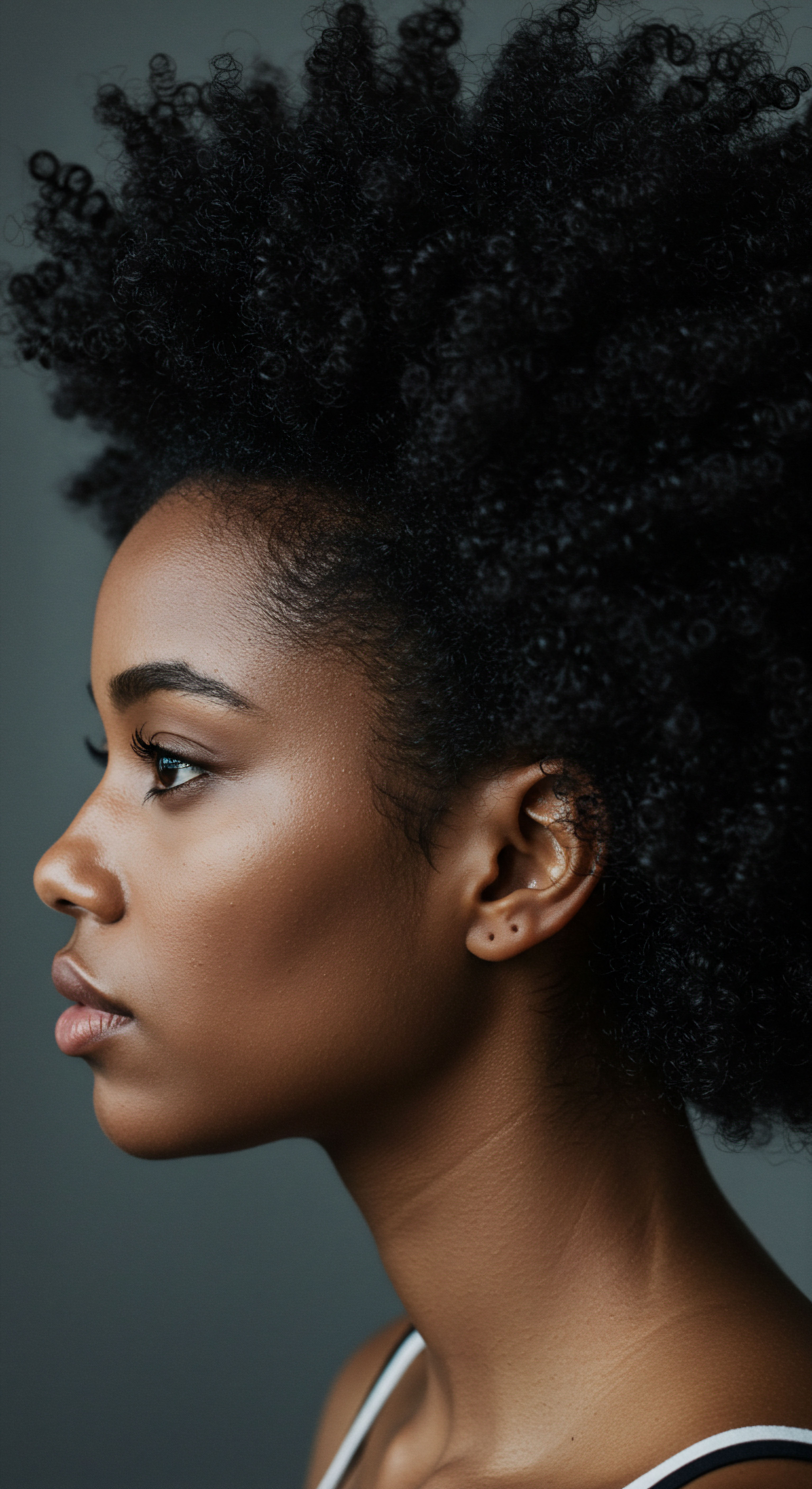
The Earliest Formulations
The earliest known hair care products were far removed from today’s multi-ingredient concoctions. They were simple, often single-ingredient or minimal blends, relying on the inherent properties of natural elements.
- Oils ❉ Olive, coconut, castor, and sesame oils were prized for their moisturizing and protective qualities. These were not merely applied; they were often warmed and massaged into the scalp, allowing deeper penetration and promoting blood flow.
- Clays ❉ Certain clays, rich in minerals, served as cleansing agents, drawing out impurities from the scalp without harsh detergents.
- Herbs and Botanicals ❉ Plants offered a diverse palette of solutions. Henna, beyond its dyeing properties, was used for its conditioning and strengthening effects. Hibiscus was prized for cleansing and stimulating hair growth.
These foundational approaches demonstrate a profound respect for the natural world’s offerings, prioritizing gentle yet consistent care that supported the scalp’s innate functions rather than overriding them. They understood that healthy hair begins with a healthy scalp, a truth that continues to guide the most enlightened modern practices.
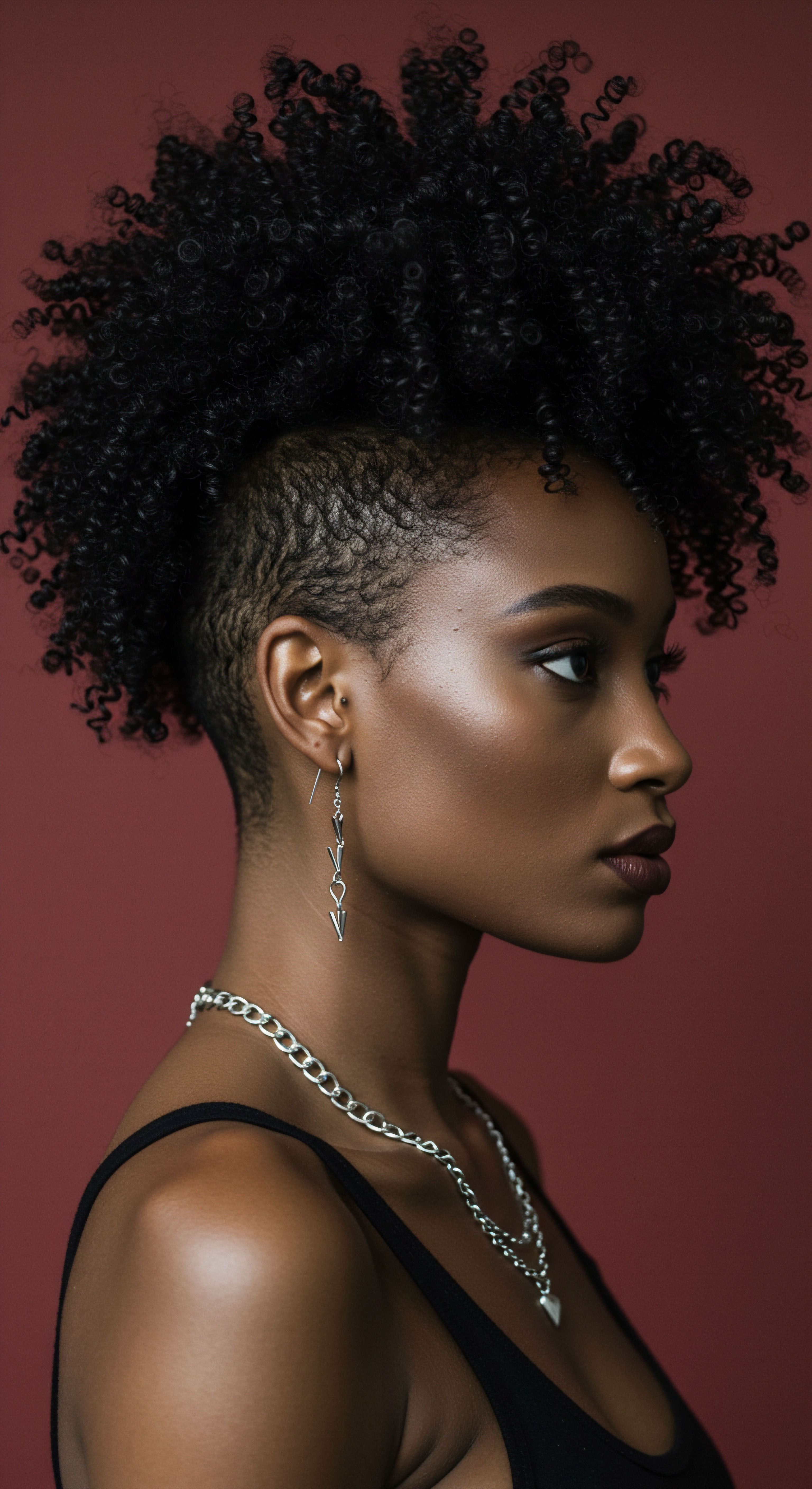
Ritual
As we shift from the foundational truths of ancient care, our gaze turns to the deliberate actions, the repeated gestures, and the mindful moments that transformed basic practices into profound rituals. Our ancestors did not merely apply substances to their hair; they engaged in purposeful ceremonies that honored the body, community, and spirit. This engagement speaks to a deeper appreciation for hair care, one that extends beyond surface-level appearance to encompass a sense of well-being and cultural belonging. How do these time-honored rituals, often steeped in intention and communal spirit, find their echoes, or perhaps their stark contrasts, in the highly individualized and often accelerated world of modern scalp treatments?
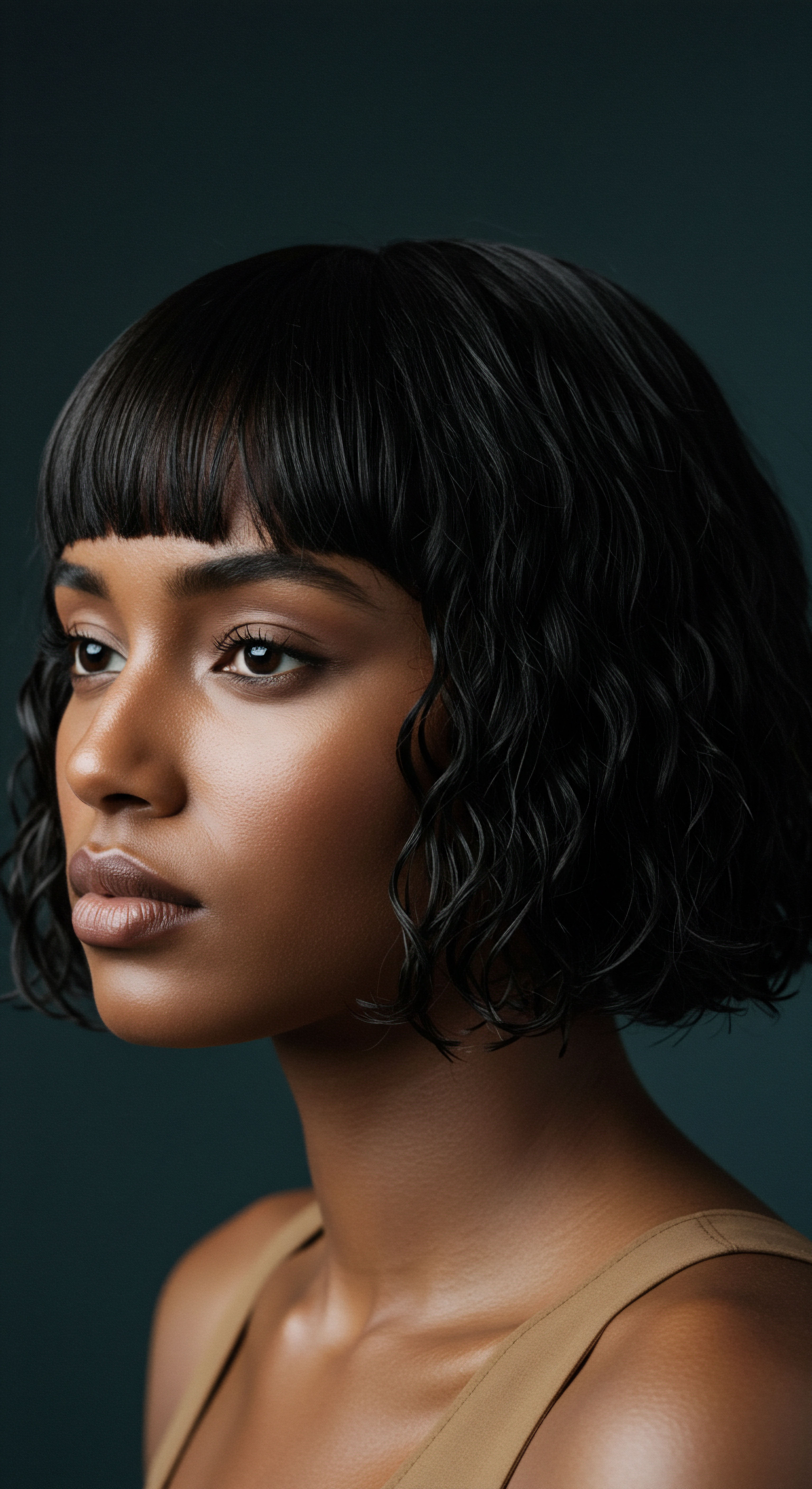
The Significance of Practice
Across diverse cultures, hair care was rarely a solitary, hurried task. In many African societies, hair styling and care were communal activities, often performed by women for women, serving as moments for storytelling, bonding, and the transmission of cultural knowledge. The intricate braiding patterns, the application of oils, and the adornment of hair were not just aesthetic choices; they communicated social status, age, marital standing, and even spiritual beliefs.
This collective engagement instilled a sense of shared heritage and identity through the very act of tending to hair. These sessions could span hours, reflecting the value placed on the process itself, a stark difference from the fast-paced convenience often sought today.
In ancient China, the emphasis on daily hair combing and periodic washing was rooted in a belief that hair reflected one’s overall health and mental state. Long, healthy hair was seen as a sign of vitality. The meticulous attention paid to hair was a practice of “nourishing life,” extending beyond mere hygiene to a broader philosophy of physical and mental harmony.
The capping ritual for men and the hair-spinning ritual for girls marked coming-of-age, symbolizing maturity and adherence to societal norms through specific hair manipulation. Such traditions underscore how deeply intertwined hair care was with personal and collective identity.

Comparing Ancient and Modern Approaches
The core distinction between ancient rituals and many modern treatments lies in their underlying philosophy. Ancient methods often sought to work with the body’s natural rhythms, supporting its inherent ability to heal and thrive. Modern treatments, particularly in their more clinical forms, sometimes aim for immediate, targeted intervention, addressing specific symptoms with potent, often synthetic, compounds.
| Aspect Focus |
| Ancient Rituals Holistic well-being, prevention, natural balance |
| Modern Treatments Targeted symptom relief, scientific efficacy, rapid results |
| Aspect Ingredients |
| Ancient Rituals Natural, plant-derived, often locally sourced |
| Modern Treatments Synthesized compounds, active ingredients, sometimes natural extracts |
| Aspect Application |
| Ancient Rituals Slow, deliberate, often communal, sensory experience |
| Modern Treatments Quick, precise, often self-administered, clinical focus |
| Aspect Underlying Belief |
| Ancient Rituals Harmony with nature, ancestral wisdom, personal identity |
| Modern Treatments Biochemical pathways, technological advancement, convenience |
A powerful illustration of ancient efficacy, now supported by modern understanding, comes from the Red Yao women of China. For centuries, these women have maintained remarkably long, healthy, and often jet-black hair well into old age, a phenomenon attributed to their ritualistic use of Fermented Rice Water. This practice, where rice water is left to ferment for days before use as a rinse, unlocks beneficial compounds. Modern research confirms that this fermentation process dramatically increases the bioavailability and potency of natural ingredients.
Specifically, fermented rice water contains inositol (Vitamin B8), which helps repair damaged hair at a cellular level, and panthenol (Vitamin B5), which acts as a moisture magnet for strands. This real-world example of enduring hair health, sustained through generations by a simple yet scientifically potent ritual, offers a compelling counterpoint to the often-complex formulations of contemporary products. It suggests that sometimes, the most effective solutions are those that have been patiently refined through observation and generations of practice.
The deliberate, often communal, nature of ancient hair care rituals contrasts with the modern emphasis on individual, quick-fix solutions.

Relay
How do the ancient whispers of plant-based remedies and mindful touch translate into the intricate language of modern trichology and dermatological science? This query leads us to a deeper, more sophisticated inquiry into the underlying mechanisms and comparative effectiveness of hair and scalp care across vast spans of time. It compels us to consider how cultural perspectives on health and beauty have shaped our understanding of the very structures we seek to nourish and protect. Is it possible that the scientific rigor of today merely confirms, rather than invents, some of the profound truths our ancestors intuited through generations of lived experience?
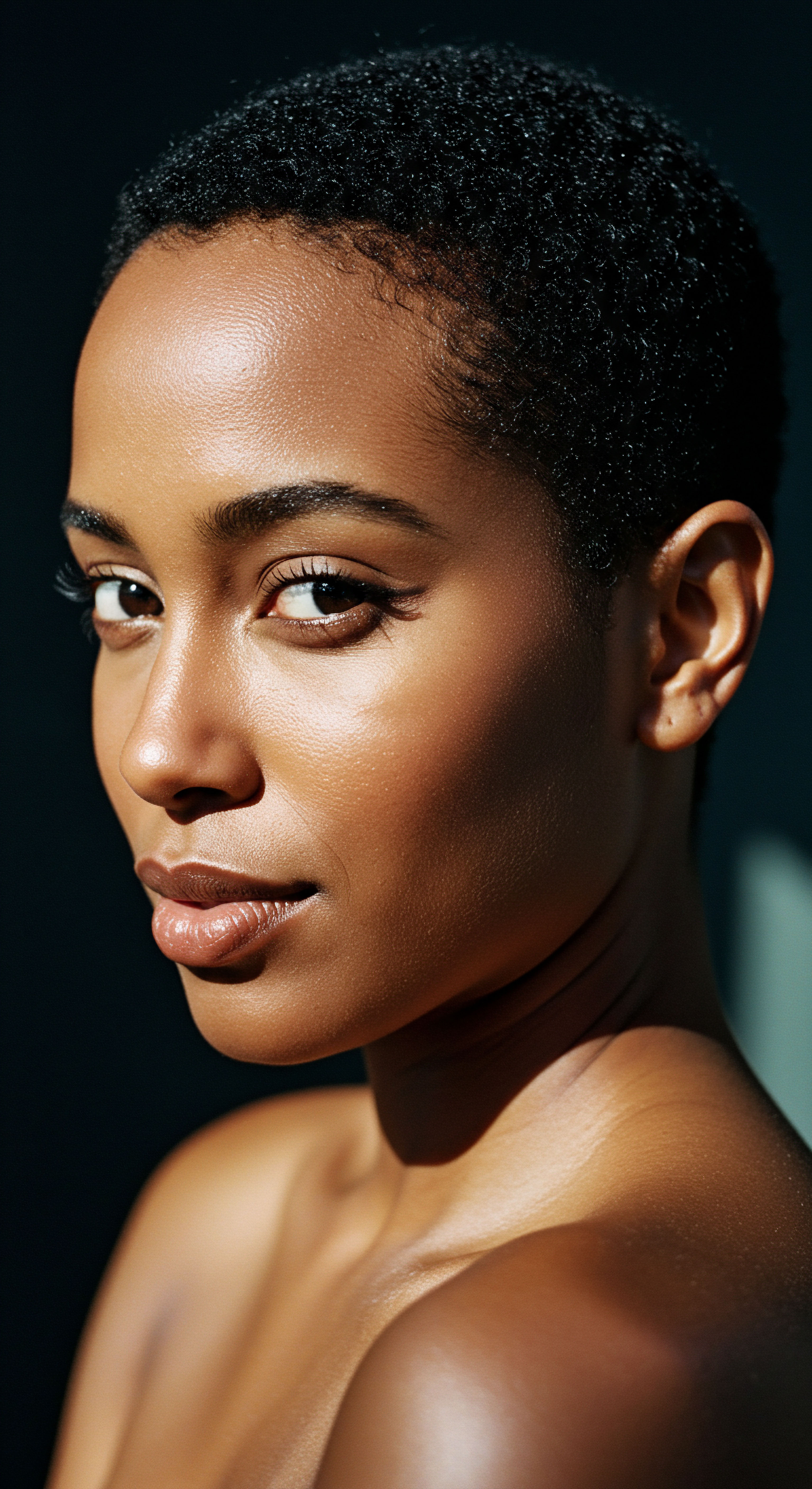
From Observation to Microscopic Understanding
The historical journey of understanding hair and scalp health is a compelling one, moving from empirical observation to detailed microscopic and molecular analysis. For centuries, hair was often misunderstood, even dismissed by some classical thinkers like Aristotle as mere bodily secretions. This view slowly changed, with the formal discipline of trichology emerging in the 19th century, marking a shift toward scientific inquiry into hair structure, growth, and pathologies. Today, our understanding of the hair follicle as a complex mini-organ, influenced by genetics, hormones, nutrition, and the microbiome, is profound.
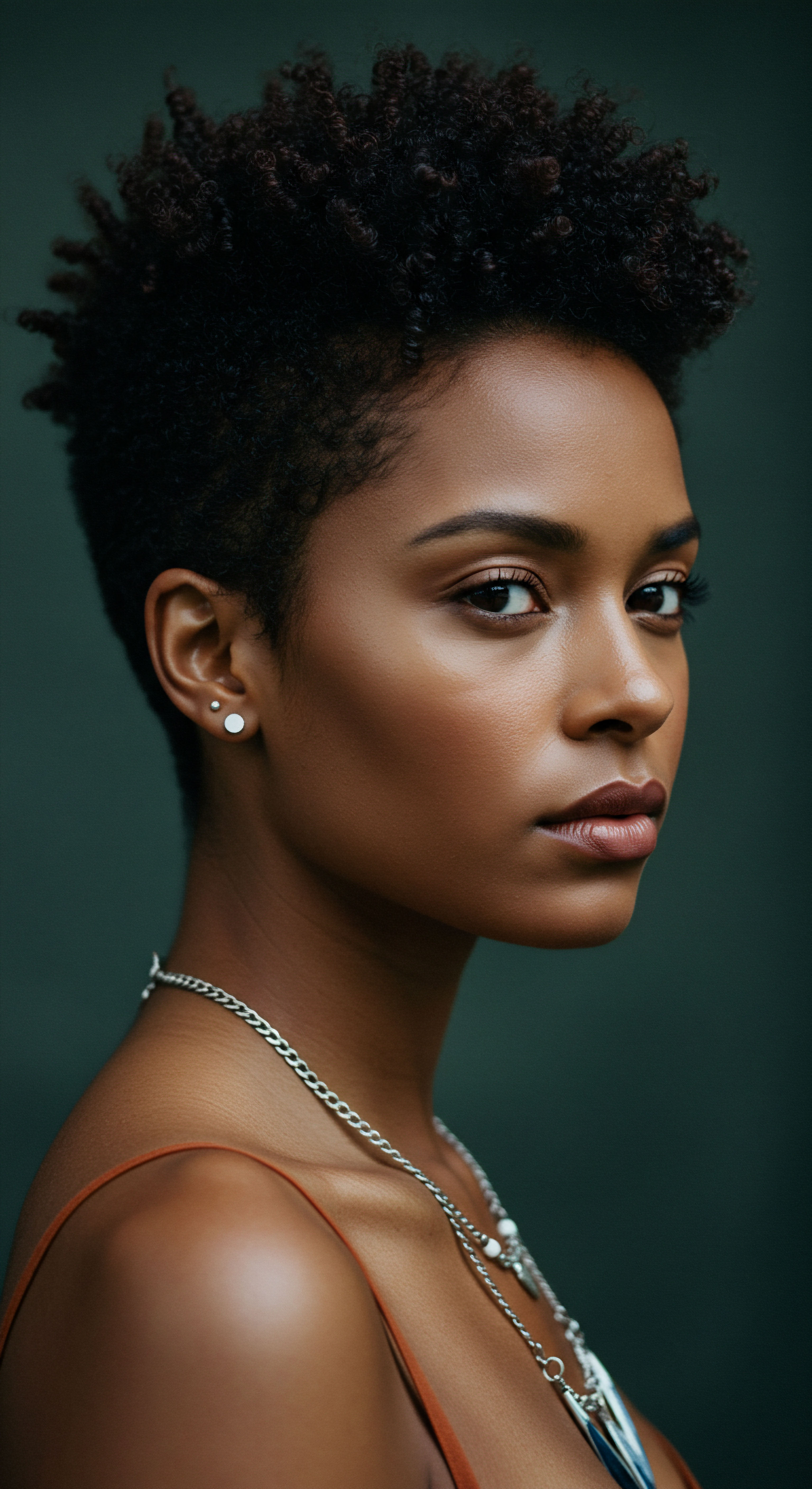
Scalp Microbiome and Traditional Practices
A fascinating intersection of ancient wisdom and modern science lies in the burgeoning field of the scalp microbiome. While ancient cultures lacked the tools to identify microorganisms, their practices often inadvertently fostered a balanced scalp environment. Oil cleansing, for instance, used by ancient Egyptians with castor and olive oils, adheres to the chemical principle that “like dissolves like.” This method effectively dissolved excess sebum, environmental pollutants, and product buildup while preserving the scalp’s natural moisture barrier. Modern trichologists recognize that maintaining this barrier is crucial for a healthy microbiome, preventing the overgrowth of yeasts and bacteria that can lead to conditions like seborrheic dermatitis.
A clinical study on the efficacy of traditional Chinese medicine (TCM) for scalp seborrheic dermatitis (SSD) provides compelling evidence of this synergy. Patients with SSD were treated with a combination of TCM formulations, including topical applications and oral capsules. The study found that symptom scores across mild, moderate, and severe cases of SSD significantly decreased after treatment.
For instance, patients with moderate SSD showed a symptom score reduction of 4.90 ± 1.77 points after four weeks of treatment. This research underscores that ancient systems, when applied with precision, can yield measurable, positive outcomes for complex scalp conditions, offering a less commonly cited yet robust data point in the discussion of traditional remedies.

Modern Interventions and Their Precursors
Modern scalp treatments often leverage advanced pharmaceutical and cosmetic chemistry to address specific concerns like hair loss, dandruff, and inflammatory conditions.
- Targeted Molecules ❉ Contemporary treatments frequently contain highly specific active ingredients, such as minoxidil for hair regrowth or corticosteroids for scalp inflammation. These molecules are designed to interact with precise biological pathways within the scalp and follicles.
- Advanced Delivery Systems ❉ Shampoos, serums, and foams are formulated to deliver these ingredients efficiently, sometimes using nanotechnology or liposomal encapsulation to enhance penetration.
- Diagnostic Tools ❉ Modern trichology relies on tools like dermoscopy and digital analysis to assess scalp health at a micro-level, allowing for highly personalized treatment plans.
However, many modern concepts have historical parallels, albeit in less refined forms. Scalp massage, a staple in Japanese head spas and Ayurvedic practice, is now scientifically recognized for its ability to stimulate blood flow, delivering nutrients and oxygen to hair follicles, and helping to relieve tension. Exfoliation, a common step in modern scalp routines to remove dead skin cells and product buildup, mirrors ancient practices of using natural abrasives or even fine-toothed combs to cleanse the scalp.
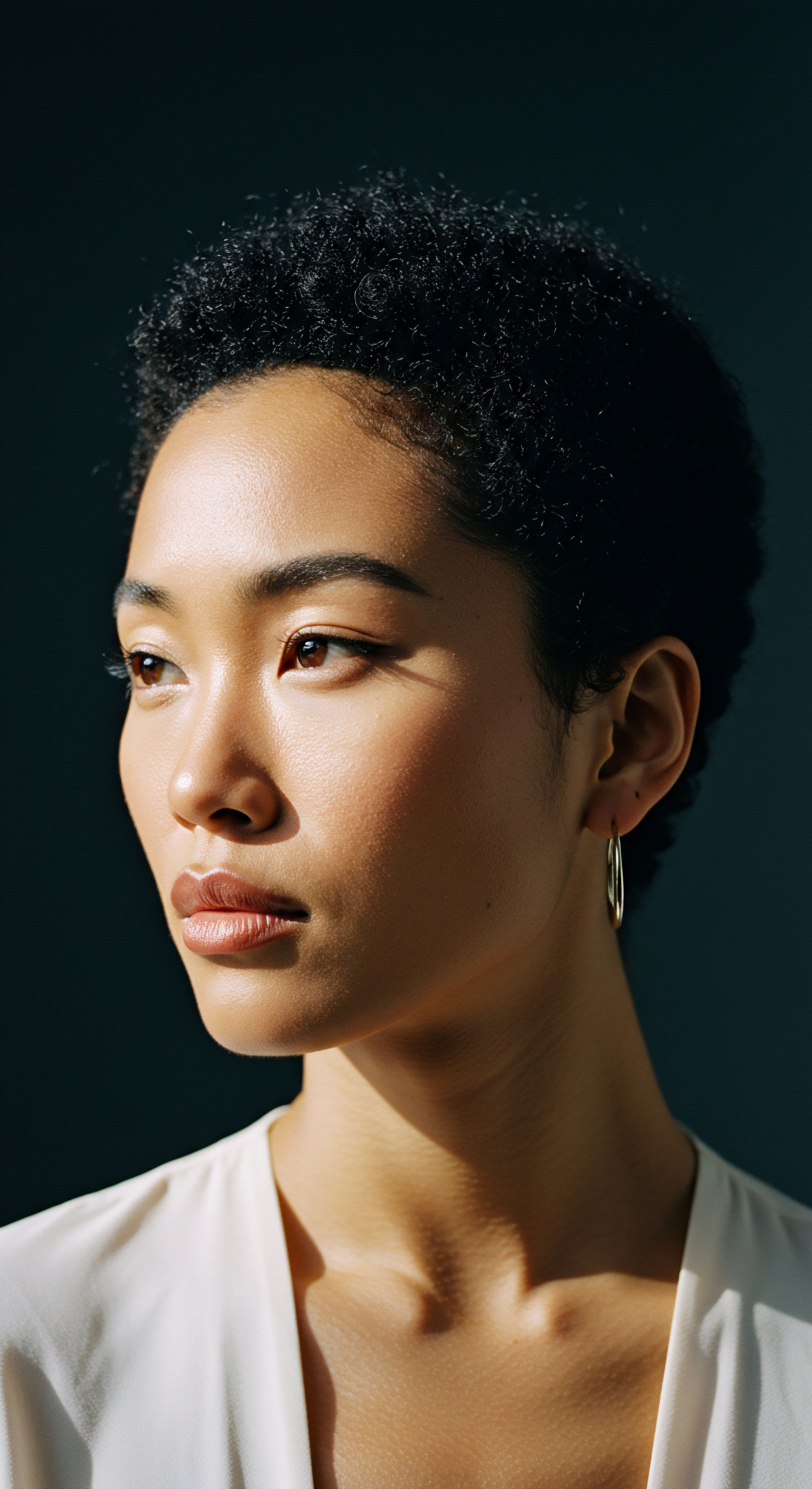
Cultural Perspectives on Hair and Identity
Beyond the biochemical, hair care serves as a powerful cultural marker. The anthropology of hair reveals how hairstyles and care practices signify identity, social status, and even resistance. In pre-colonial Africa, intricate hairstyles were not merely decorative; they communicated geographic origin, marital status, age, and spiritual power. This cultural depth is often less apparent in the consumer-driven modern beauty industry, where trends can shift rapidly and the personal connection to hair may be more about individual expression than collective heritage.
The efficacy of traditional hair and scalp care often stemmed from a deep understanding of natural properties, now frequently validated by contemporary scientific inquiry.
The emphasis on long, thick hair in many ancient cultures, as a symbol of health and fertility, contrasts with modern societal pressures that sometimes favor specific textures or lengths, often achieved through chemical or mechanical alteration. This can lead to tension at the root of the hair follicle, particularly for textured hair, as certain “protective styles” involving extensions can inadvertently cause damage. Understanding these historical and cultural contexts provides a richer backdrop for appreciating both the advancements and the potential pitfalls of contemporary hair care.

Reflection
As we step back from this exploration of ancient hair care and modern scalp treatments, a quiet realization settles ❉ the story of tending to our hair and scalp is, at its heart, a timeless human endeavor. It is a story not solely of chemical reactions or botanical compounds, but of connection—connection to our bodies, to our heritage, and to the enduring quest for well-being. Perhaps the true advancement lies not in discarding the old for the new, but in a gentle weaving of wisdom, allowing the patient insights of the past to illuminate the pathways of our present, creating a future where hair care is both deeply effective and profoundly respectful.
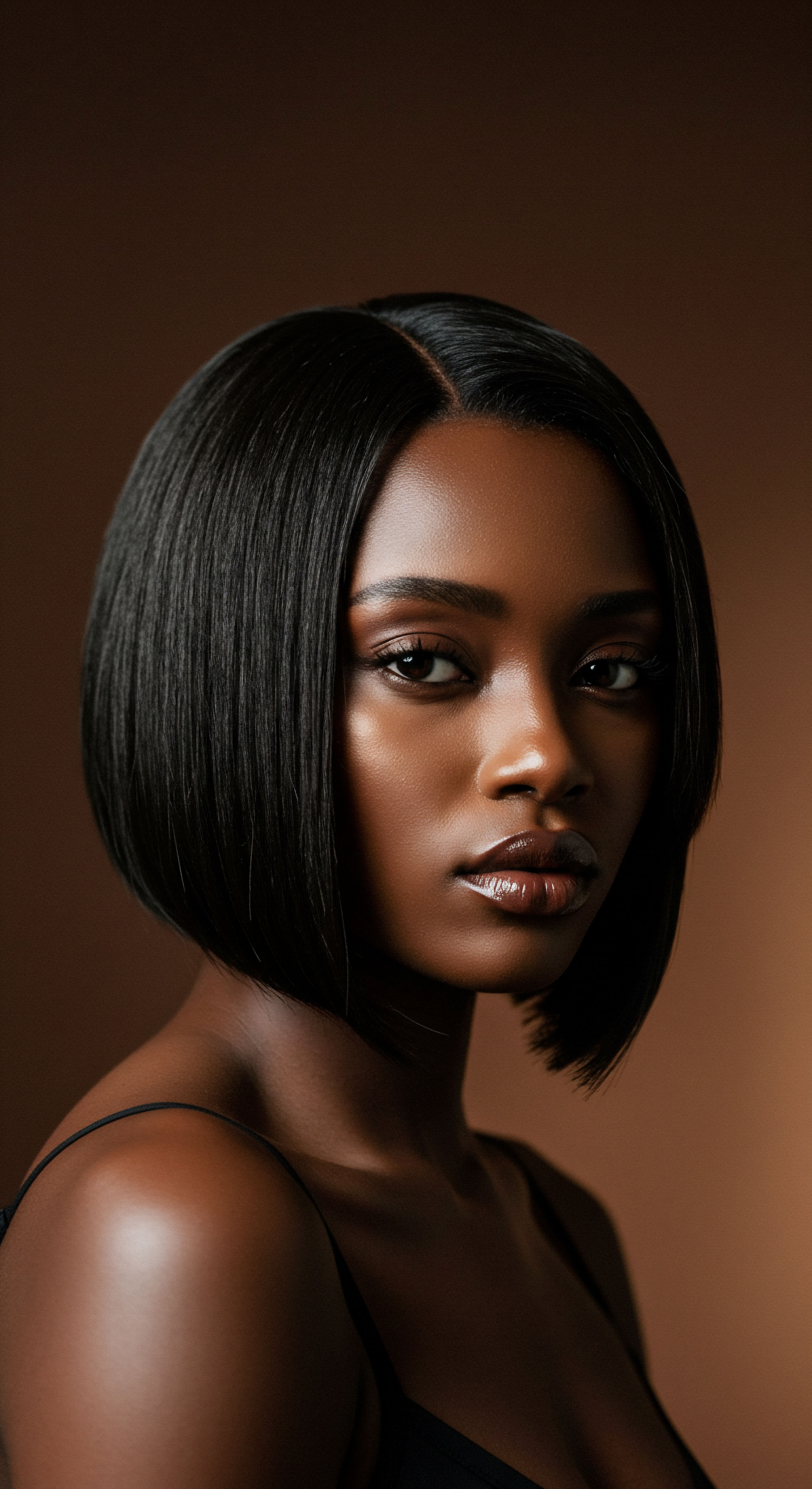
References
- Byrd, Ayana, and Lori Tharps. Hair Story ❉ Untangling the Roots of Black Hair in America. St. Martin’s Griffin, 2014.
- Chun, Hea Sook, and Kyu Mi Park. “A Study on the Hair Removal Culture of Ancient Egypt.” Journal of the Korean Society of Cosmetology 19, no. 1 (2013) ❉ 125-134.
- DeLauder, Saundra F. “Considering issues of Racial Bias in Drug Testing Where Hair Is the Matrix.” Transforming Anthropology 11, no. 1 (2003) ❉ 58-61.
- Hernandez, Gabriela. Classic Beauty ❉ The History of Makeup. Schiffer Publishing, 2011.
- Mouchane, Mohamed, et al. “Ethnobotanical Survey of Medicinal Plants used in the Treatment and Care of Hair in Karia ba Mohamed (Northern Morocco).” Journal of Medicinal Plants Studies 12, no. 1 (2024) ❉ 1-8.
- Sherrow, Victoria. Encyclopedia of Hair ❉ A Cultural History. Greenwood Press, 2006.
- Tarlo, Emma. Entanglement ❉ The Secret Lives of Hair. Oneworld Publications, 2016.
- Weitz, Rose. Rapunzel’s Daughters ❉ What Women’s Hair Tells Us about Women’s Lives. Farrar, Straus and Giroux, 2004.
- Xu, Rong, et al. “Clinical efficacy of a combination treatment of traditional Chinese medicine for scalp seborrheic dermatitis.” Journal of Cosmetic Dermatology 22, no. 8 (2023) ❉ 2291-2297.
- Yang, Jian, et al. “Meta-Analysis on the Efficacy and Safety of Traditional Chinese Medicine as Adjuvant Therapy for Refractory Androgenetic Alopecia.” Evidence-Based Complementary and Alternative Medicine (2019) ❉ 1-13.